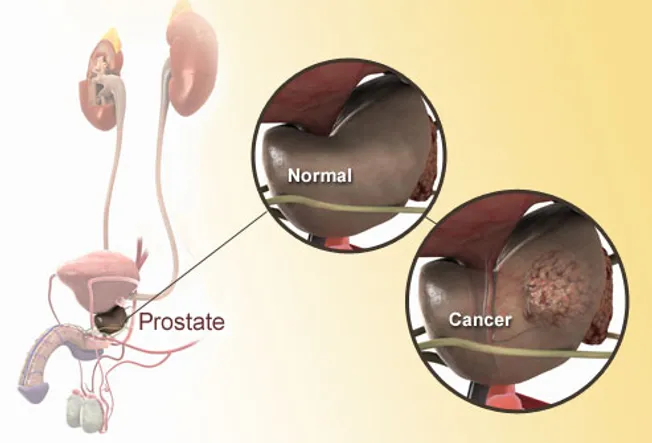Leave a Comment:
1 comment
[…] Prostate Cancer- focal not “sledgehammer” approach to therapy […]
Reply
I was listening to a local radio show yesterday morning. One of the DJ’s, Deter (his show name) glumly recounted how he had spent most of the previous night with his dad in the hospital. Deter’s dad had been diagnosed with prostate cancer.

Deter represented what I consider a typical prostate cancer caregiver. A knowledgeable caller mentioned a prostatectomy or surgery to remove the entire prostate gland. “Side effects” said Deter… “no problem”… “I mean wouldn’t you want the cancer cut out of you at any cost???” Deter said incredulously.
Having lived with extensive collateral damage from aggressive conventional therapies, all I could think of was how misguided Deter was. As the article below calls it, prostatectomy is the sledgehammer approach to prostate cancer therapy. High intensity focused ultrasound (HIFU) is a lumpectomy.
The article linked and excerpted below talks about High-Intensity Focal Ultrasound (HIFU) therapy for prostate cancer. HIFU therapy for prostate cancer offers lower morbidity, fewer side effects and idea of living with at least some prostate cancer still inside your prostate.
The fact is there are many non-conventional therapies for prostate cancer that offer less morbidity and fewer, if any, collateral damage.
For more information about non-conventional prostate cancer therapies scroll down the page, post a question or a comment and I will reply to you ASAP.
Thank you,
David Emerson
“One of the pioneers of focal therapy for prostate cancer, which has been described as a “male lumpectomy,” says that cancer control is good in the short and immediate term, and the majority of men retain potency and continence…
It (HIFU) clearly reduces genitourinary morbidity significantly more than radical prostatectomy, he told Medscape Medical News…
“The first concept was to send patients to active surveillance for a single small cancer, which is now routinely done. The second concept was to treat the index lesion with focal therapy modalities,” he said. “But you can mix the two together,” he explained. “You can treat one lobe with the index lesion and not treat the other lobe with a single very low micro-foci of cancer.”
I’m totally in line with this approach, and I favor HIFU as well, because it is easy for urologists to do, it’s very effective, and we can offer it as a same-day surgery,” he said…
In fact, when Dr Ahmed first started the focal therapy program at University College London about 8 years ago, “we were all doing radical prostatectomy and it was quite clear that the surgery carried significant morbidity — on average, 20% incontinence, 50% erectile dysfunction — and this in the best of centers,” he told Medscape Medical News...
“High-intensity focused ultrasound (HIFU) ablation of the prostate showed “adequate” short-term prostate cancer control, indicating the minimally-invasive procedure is an acceptable alternative to immediate surgery or radiation, according to new research from USC Urology, Keck Medicine of USC.1
Among 100 patients with prostate cancer who received HIFU, 91% were able to avoid radical treatment for at least 2 years, according to the retrospective analysis, which was published in the Journal of Urology. Also, nearly three-fourths (73%) of patients did not experience treatment failure, and there was a 100% continence preservation rate.
“This positive data empowers urologists to use focal HIFU ablation to effectively address prostate cancer without the intrinsic side effects of radical treatments…”
Between December 2015 and December 2019, 100 consecutive men received hemigland HIFU using either Ablatherm (EDAP TMS) or Sonablate 500 (SonaCare). The median patient age was 65 years (interquartile range [IQR], 59-70) and the median PSA at baseline was 5.9 ng/ml (IQR, 4.5-7.2).
The median prostate volume at baseline was 34 cc (IQR, 27-46). Per MRI, 71% of patients had a PI-RIAD score ≥3. Eighty-five percent of patients had stage T1c disease, 12% had stage T2a disease, and the remaining 3% had stage T2b or T2c disease. Per NCCN definition, disease risk status included very low (8%), low (20%), intermediate favorable (50%), intermediate unfavorable (17%), and high (5%).
Treatment failure was the primary end point of the study. The trial design defined treatment failure as follow-up biopsy showing Grade Group 2 or higher disease, metastases, systemic therapy, radical treatment, or prostate cancer–specific mortality. Other outcomes measured included 90-day complications, International Prostate Symptom Score (I-PSS), and International Index of Erectile Function (IIEF).
The median follow-up period was 20 months. At 2 years, 91% and 73% of patients remained free from radical treatment and treatment failure, respectively. Also at 2 years, 90% of patients did not need repeat focal HIFU, and 76% of patients successfully avoided grade group 2 or greater recurrence.The only baseline disease characteristic associated with Grade Group 2 or greater recurrence was having bilateral prostate cancer at diagnosis (P = .03).
All 100 patients maintained continence (zero pad). The median I-PSS scores before and after hemigland HIFU were 9 versus 6 (P = .005), respectively. The median before and after treatment IIEF-5 scores were 22 versus 21 (P = .99), respectively.
Overall, there were 13 minor complications after HIFU, and no major complications. The minor complications were grade 1 neuropraxia (n = 1), grade 1 urinary retention/insufficient voiding (n = 7), and grade 2 urinary tract infection (n = 5). There were no cases of rectal fistula and no patients died.”
[…] Prostate Cancer- focal not “sledgehammer” approach to therapy […]
Reply